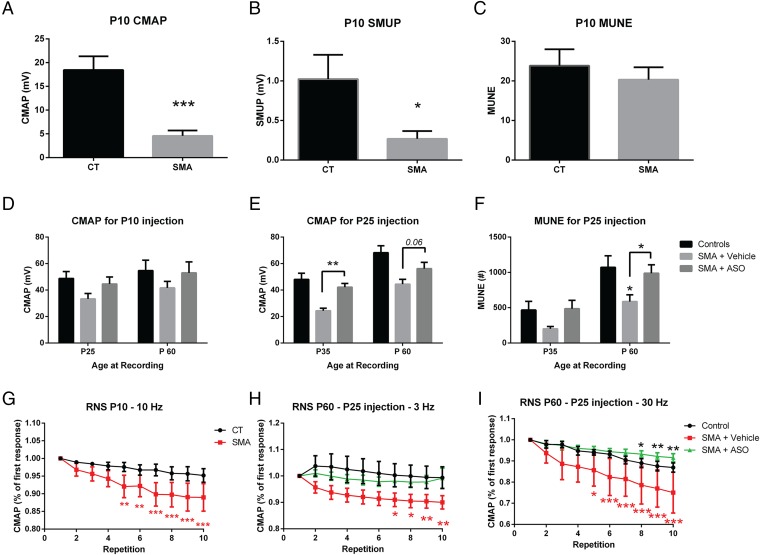Fig. 5.
Electrophysiology phenotype of the Burgheron mutants and rescue by ASO therapy. (A–C) Surface electromyography on PND 10 mutants (n = 6) and controls (n = 6) revealed a strongly reduced CMAP (A) and average SMUP (B) in the mutants. MUNE (C) was unchanged (Student t test). (D and E) CMAP was measured in control, vehicle-treated, and ASO-treated mutants (n = 6 per group) after ASO treatment at PND 10 (D) or PND 25 (E). Age at recording is indicated below the graphs. Effect of the treatment on mutants was almost significant after the PND 10 administration (two-way ANOVA, age, P = 0.14; treatment, P = 0.054) and highly significant after the PND 25 administration (two-way ANOVA, age, P < 0.001; treatment, P < 0.001). Significant differences between vehicle- and ASO-treated groups at a given age are indicated with brackets (Sidak’s multiple comparison test). (F) On mice treated at PND 25, MUNE was highly affected by both the age (P < 0.01) and the treatment (P < 0.001, two-way ANOVA). At PND 60, MUNE was significantly lower in vehicle-treated mutants than in control mice (*P < 0.05) and restored in mutants treated at PND 25 (Sidak’s multiple comparison test, bracket, *P < 0.05). (G–I) RNS at different frequencies revealed a strong decrement in the response (represented as a percentage of the first response) in the mutants (repeated-measure ANOVA, P < 0.05). ASO treatment at PND 25 prevented this decrement. Significant differences between the response to a given repetition and the initial response are indicated on the graph (two-way repeated-measure ANOVA, Dunnett’s multiple comparison tests).

